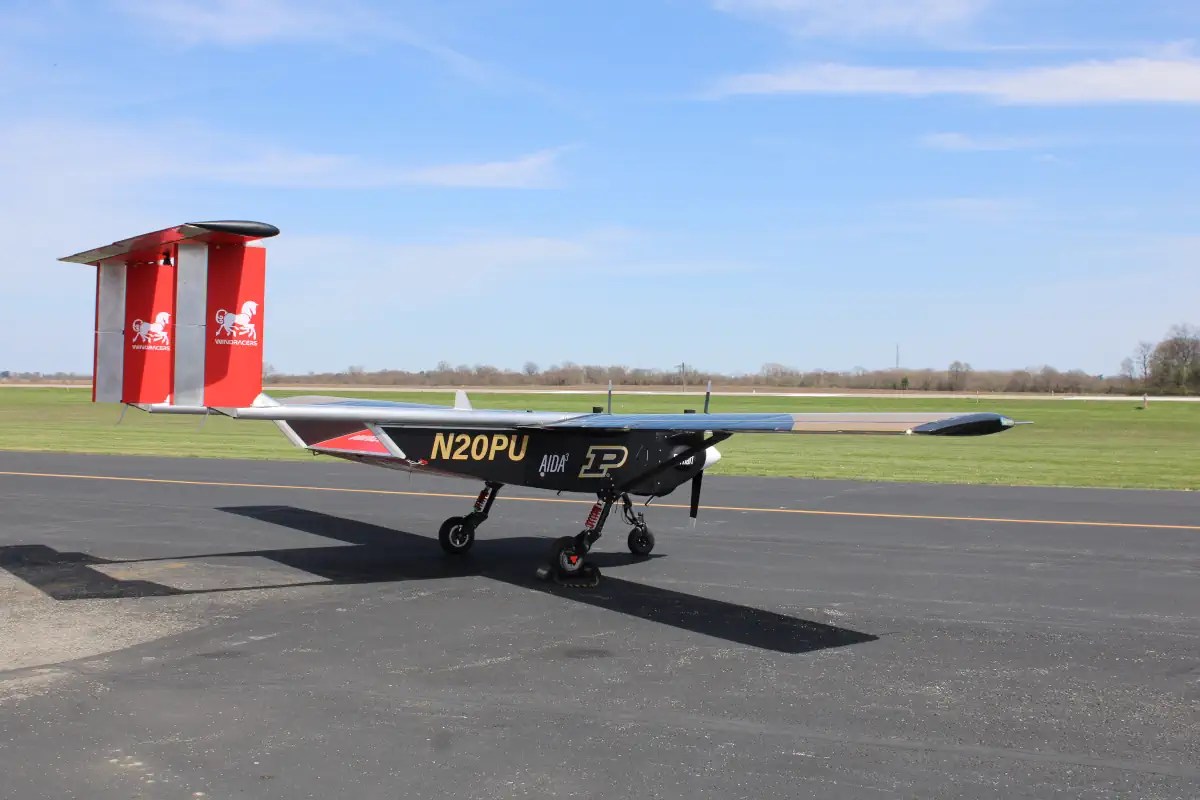Center on AI for Digital, Autonomous and Augmented Aviation (AIDA3) will serve as anchor for R&D and platform into US market for UK self-flying aircraft developer Windracers
Windracers ULTRA UAVs to be based at the same Purdue University Airport that served as the world-flight research home for legendary aviatrix Amelia Earhart
Windracers, the low cost platform for autonomous air transport, and Purdue University today launched the world’s first AI center focused on autonomous aviation. The pioneering Center on AI for Digital, Autonomous and Augmented Aviation (AIDA3) will deliver innovations aimed at realizing the full transformational potential of uncrewed aerial vehicles (UAVs) and related technologies. The partnership will also serve as an anchor for R&D and a platform into the US market for Windracers.
Windracers was founded in 2017 and was originally conceived to bring down the cost of delivering humanitarian aid to remote communities in Africa. Its relentless focus on cost reduction has shaped everything from the design of the aircraft and its use of non-specialised parts, to the development of its proprietary autopilot system and its approach to manufacturing.
Its ULTRA UAV – a robust, twin-engine fixed-wing aircraft which measures 20 feet by 30 feet – is a multi-purpose ‘Jeep of the skies’ which offers high utilization and is easy to maintain. It can take off, fly and land safely without the need of a remote pilot thanks to its proprietary Masterless autopilot system. Its capabilities span Detect, Drop and Deliver, with applications ranging from the delivery of parcels and humanitarian aid to defense.
Designed for extreme environments, both the aircraft and the flight control system incorporate a high level of redundancy and the high-reliability nature of its platform has been proven – it has completed tens of thousands of kilometres of autonomous flights for the Royal Navy, UK Ministry of Defence and British Antarctic Survey among others.
With the launch of AIDA3, Windracers will collaborate closely with Purdue University – a renowned engineering school with deep ties to the US military – to ensure self-flying aircraft can be operated efficiently and at scale. AIDA3 will investigate artificial intelligence (AI) and machine learning (ML) models for autonomous transportation applications ranging from demand analytics and maintenance in commercial logistics to meteorological sensing and real-time weather prediction.
To support the R&D programming at AIDA3, Windracers will initially provide two of its ULTRA UAVs for regular real-world testing, based at the same Purdue University Airport that served as the world-flight research home for legendary aviatrix Amelia Earhart in the 1930s. The first two UAVs will be named Earhart and Armstrong (after Neil Armstrong, one of Purdue’s many storied alumni).
“We are enormously excited to launch this pioneering AI center with Purdue University, a highly respected academic institution whose alumni include the first and most recent humans to step on the moon. Our ambition is to take another giant leap and revolutionize the aviation industry so that it is low cost and fully automated,” said Stephen Wright, Founder and Executive Chairman at Windracers. “This unique collaboration will be the anchor of our R&D and will serve as a platform for the US, a large and dynamic market which is embracing the potential of autonomous aviation.”
AIDA3’s approach is what sets it apart. Existing AI/ML models are not sufficiently reliable to close the loop from data to actions in the real-world that is safe, trustworthy and scalable, said Sabine Brunswicker, AIDA3 director and Purdue professor of digital innovation and communication.
“Currently, it can take 10 people to operate one UAV. It is time for one operator to be able to coordinate 100 UAVs at the same time” she said. “Our mission is to go beyond current AI/ML models where the potential benefits of smarter UAVs can be fully realized globally. If AIDA is successful, its breakthroughs can truly transform society at scale.”
AIDA3 is the first major output of Purdue’s Institute for Physical Artificial Intelligence (IPAI), whose purpose is to develop AI at the intersection of the virtual and physical worlds.
To learn more about AIDA3, go to https://www.purdue.edu/computes/aida3.
About Purdue
Purdue University is a public research institution with excellence at scale. Ranked among top 10 public universities and with two colleges in the top 4 in the United States, Purdue discovers and disseminates knowledge with a quality and at a scale second to none. More than 105,000 students study at Purdue across modalities and locations, with 50,000 in person on the West Lafayette campus. Committed to affordability and accessibility, Purdue’s main campus has frozen tuition 12 years in a row. See how Purdue never stops in the persistent pursuit of the next giant leap, including its first comprehensive urban campus in Indianapolis, the new Mitchell E. Daniels, Jr. School of Business, and Purdue Computes, at https://www.purdue.edu/president/strategic-initiatives
About Windracers
Windracers making self-flying aircraft an everyday reality with a low cost and dependable platform that has been designed and built to scale. From eliminating the need for a pilot to developing a flexible platform that offers high utilization and is easy to use and maintain, its ultimate goal is to bring down the cost for the end user.
Powered by its autopilot technology Masterless™, Windracers’ ULTRA UAV delivers an autonomous solution from engines on to engines off. The robust and cost-effective ULTRA (Uncrewed Low-cost TRAnsport) platform can carry 100 kg up to 1,000 km and has Short Take-Off and Landing (STOL) capability. With a flexible payload, Windracers Group provides solutions across five sectors: Mail & Parcel, Humanitarian Assistance, Defense, Medical and Environmental Protection.

